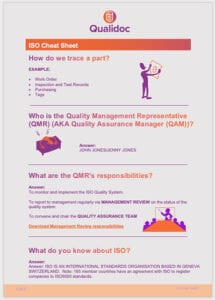First, allow me to wish everyone a very healthy and happy New Year. I hope my blogs will be useful and help you navigate the often stormy waters of quality system management.
Training for ISO9001 implementation can often be difficult. For example, I once trained a Quality Assurance Manager who was extremely good at picking up the detail and was dedicated to the job, although she had other duties to do. This is a very common situation which creates many difficulties for me and for the trainee QAM. We achieved a very good result in the audit, even though we were up until 3 a.m. the night before completing the Master Document List.
Unfortunately, after a resoundingly successful result, the idea of being a ‘Manager’ went completely to her head. and she made life unbearable by adopting a very authoritarian manner and upsetting workshop employees who, at the beginning, had been very co-operative. About four months after registration, I got a panic call from the President, who told me that the quality system was costing a huge amount of money because everything was being done strictly according to the procedures, which had not been changed since the audit. She asked me to come in and see what I could do to ‘loosen things up’.
When I arrived, I noticed a very sullen atmosphere in the office and the shop. The QAM complained to me that no one co-operated and they were not completing the documents according to the procedures. I asked her if she was monitoring the quality system for possible changes (‘continuous improvement’) and reporting her recommendations to senior management. Unfortunately. she did not see this as part of her job, and was probably unable to do it anyway. I could not budge her from her view that her position as ‘Manager’ was all-prevailing over the quality system. She spent all her time making sure everyone toed the line, instead of evaluating a quality system that was a year old, and could certainly have been improved. Eventually, she was replaced, which cost a great deal of money and aggravation for the company, whose employees had to undergo yet another change of management pace.
My clients often assume that training the Quality Assurance Manager (or management representative) to be a manager is part of my job as a consultant. While I expect to train the incumbent or candidate for QAM in quality system policies and procedures, I can’t make managers out of them if they haven’t the potential. So many attributes are required to make a good Quality Assurance Manager, besides being able to implement the quality system. QAMs must be able to walk a very tight rope between the needs of the quality system and the practicalities of company business, and have a mature outlook when handling difficult employees.
